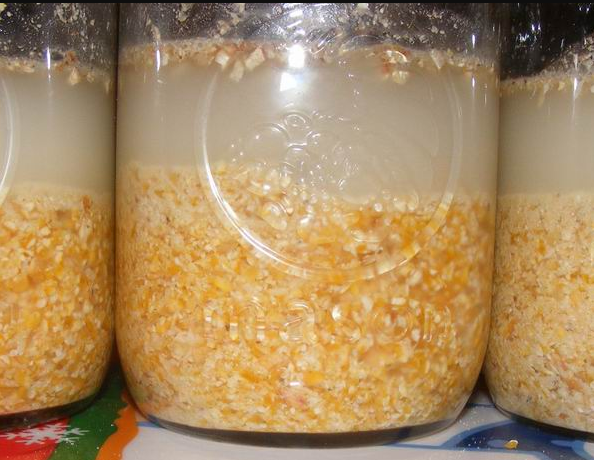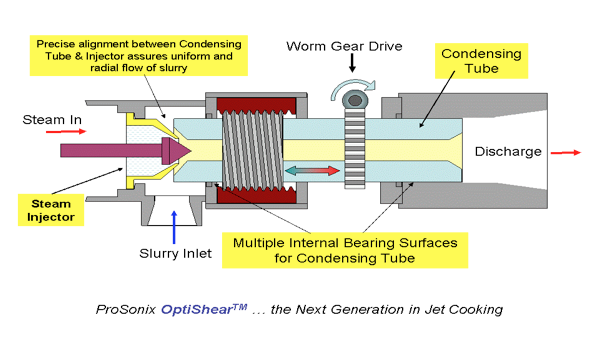Application: Wet Mill Processing – Water Heating & Jet Cooker Optimization
Corn wet milling is the process of separating the corn kernel into starch, protein, germ and fiber in an aqueous medium prior to fermentation. The primary products of wet milling include starch and starch-derived products (e.g. high fructose corn syrup and ethanol), corn oil, corn gluten, and corn germ. All agricultural crops and residues contain starch, which is a polymer of glucose, a six-carbon sugar. To produce ethanol from grain, the starch portion of the grain is exposed and mixed with water to form a mash. The mash is heated and enzymes are added to convert the starch into glucose.
There are two primary areas where
Direct Steam Injection heating can provide value for the Wet Mill process. They are the
Steeping process and the
Primary Liquefaction or starch cooking process.

Steeping Process
The steeping facilitates the separation
Steeping Process of the grain into its many components. In the
wet milling process, steeping is the process where the grain is first soaked or “steeped” in water and dilute sulfurous acid for 24-36 hours. Steep tanks may hold from 70.5 to 458 cubic meters (m3) (2,000 to 13,000 bushels) of corn, which is then submerged in a current of dilute sulfurous acid solution at a temperature of about 125°F (52°C). To reach this temperature, hot water is added to the steeping tanks. After steeping, the corn slurry is processed through a series of grinders to separate the corn germ. The remaining fiber, gluten and starch components are further segregated using centrifugal, screen and hydroclonic separators.
PSX Water Heater Advantages
- Internal Steam Modulation design of the PSX heater controls the steam mass flow and not the steam pressure thus eliminating steam hammer and vibration issues.
- Low pressure steam may be used since the steep system operates at low pressure
- Low Maintenance due to the PSX heater’s self cleaning design
- Stable operation due to better steam injection heating methods (elimination of steam hammer)
- Precise Temperature control allows for a more reliable heating process (+/- 1 °F)
- Reduced Pressure Drop (typically 1-2 psig) reduces pump energy demand
- Direct mechanical control of the steam injector allows for linear process heating control
- PSX is controlled by the plant PLC/DCS or local controller with no proprietary software required
- Ease of Installation as the PSX heater can be installed in the piping requiring no floor space



